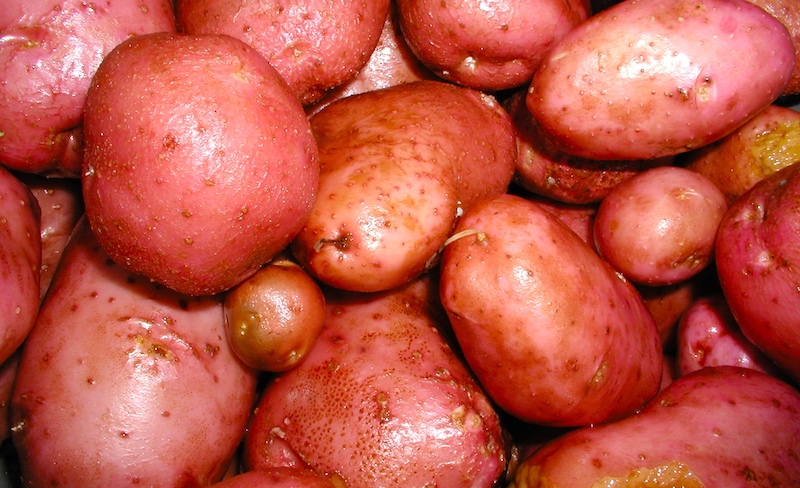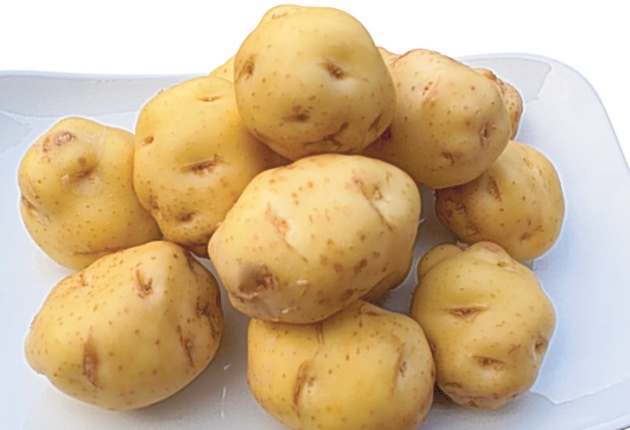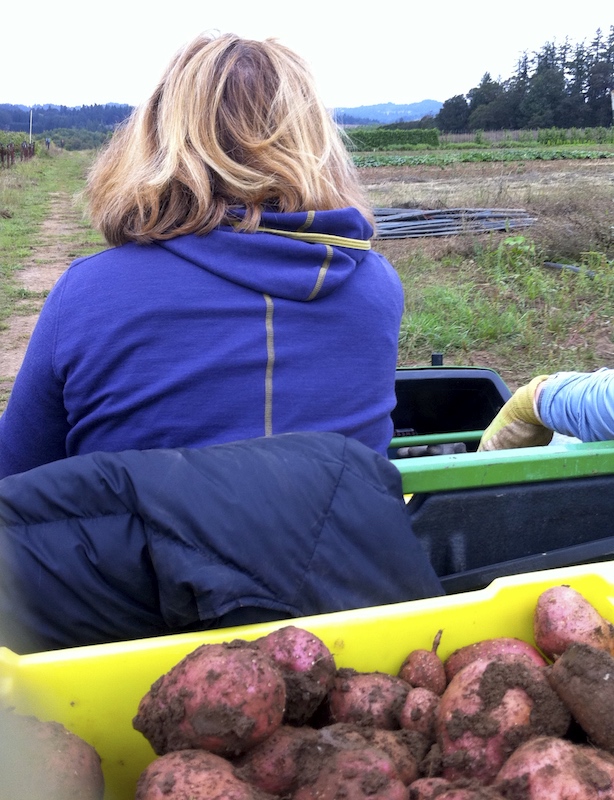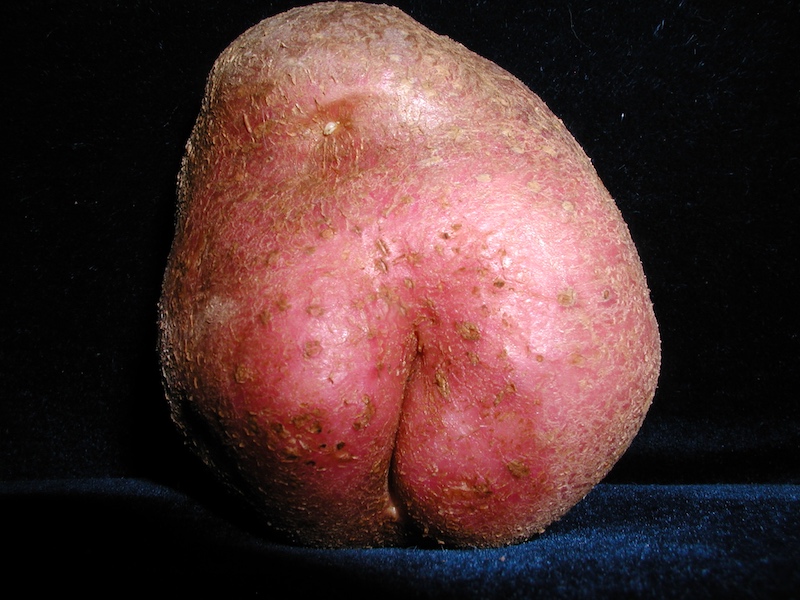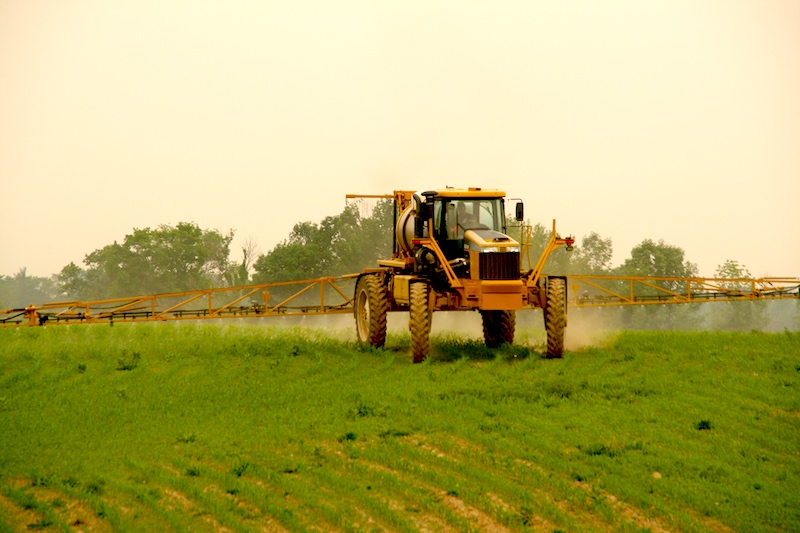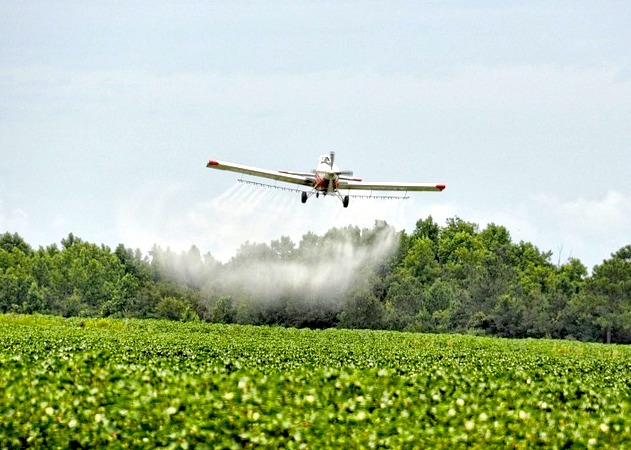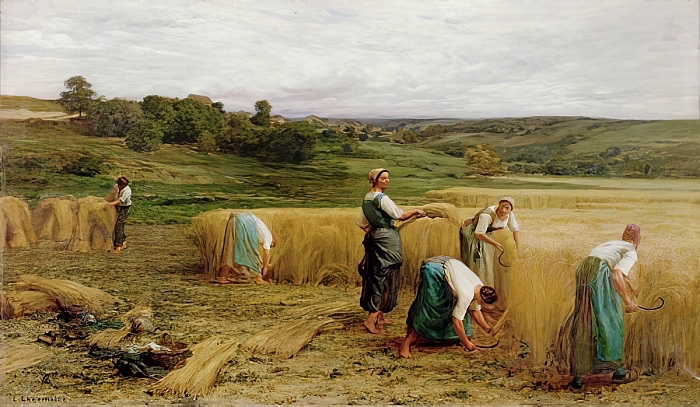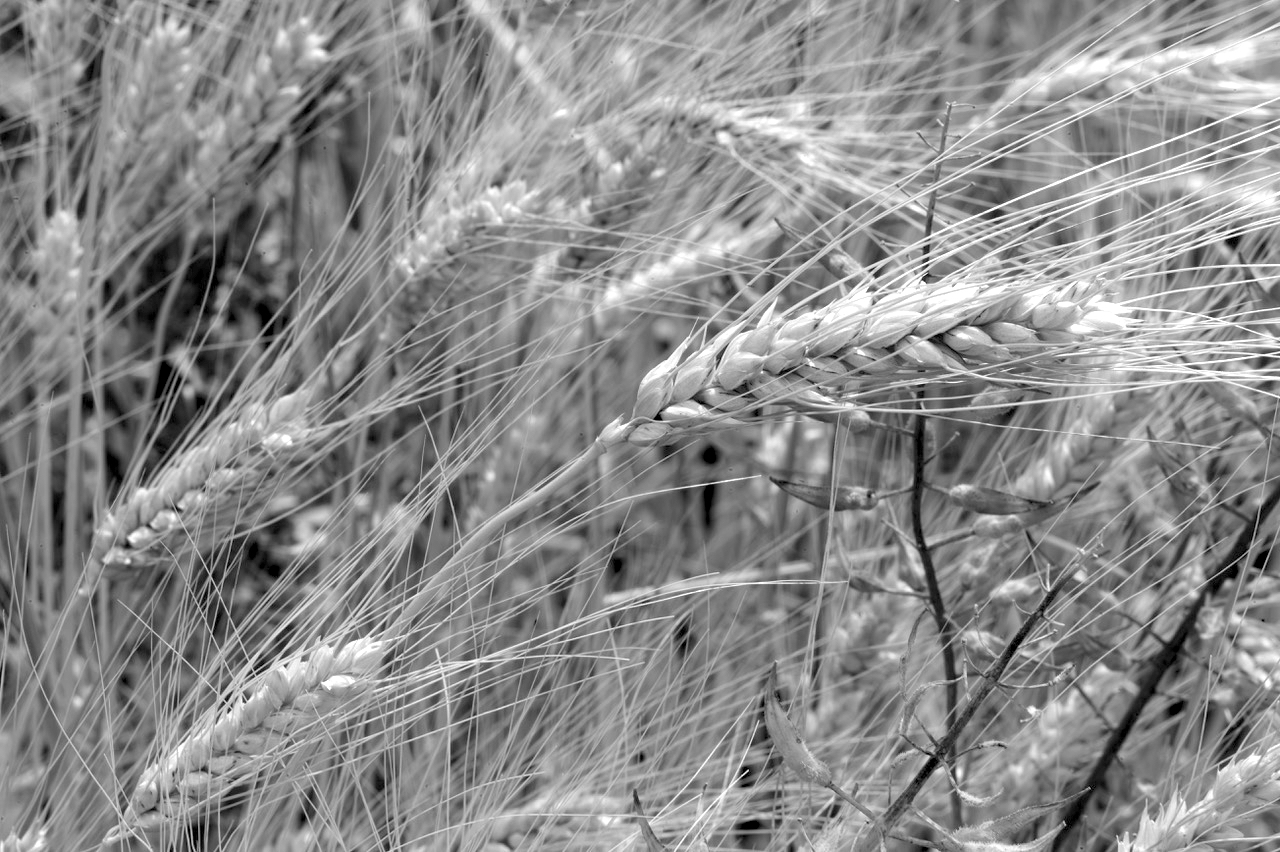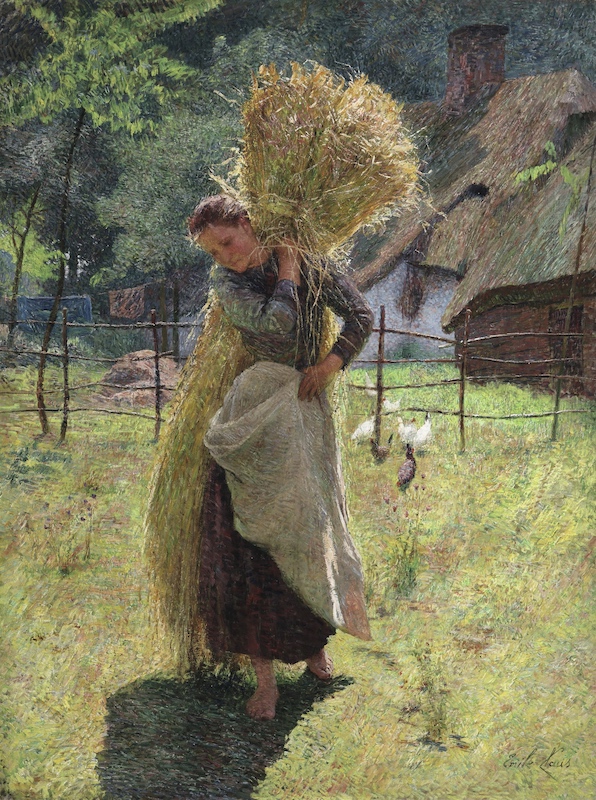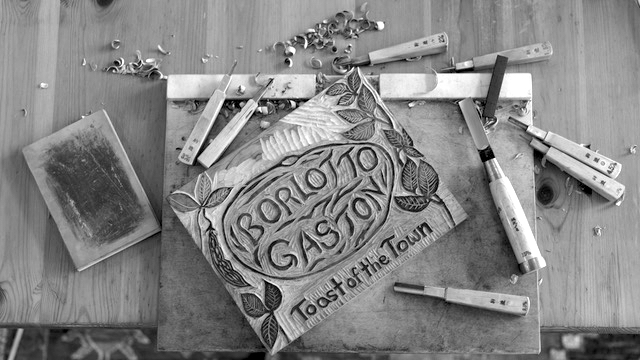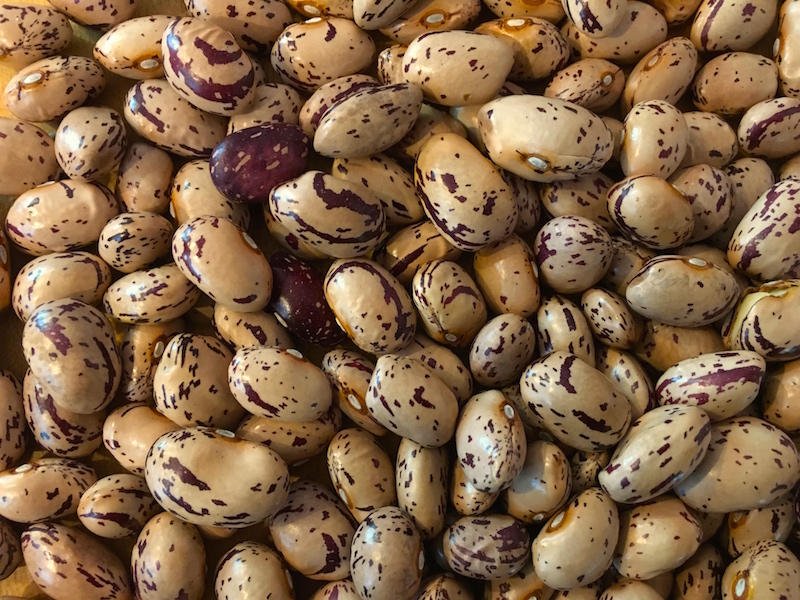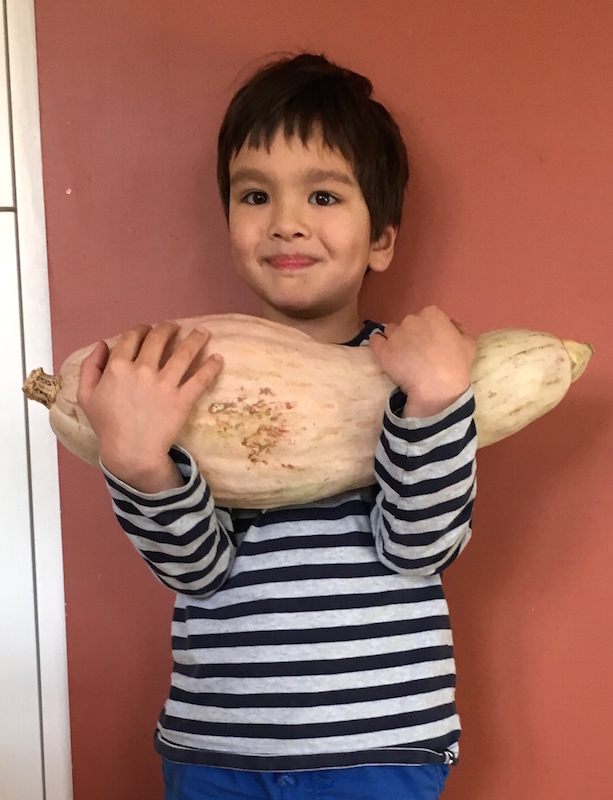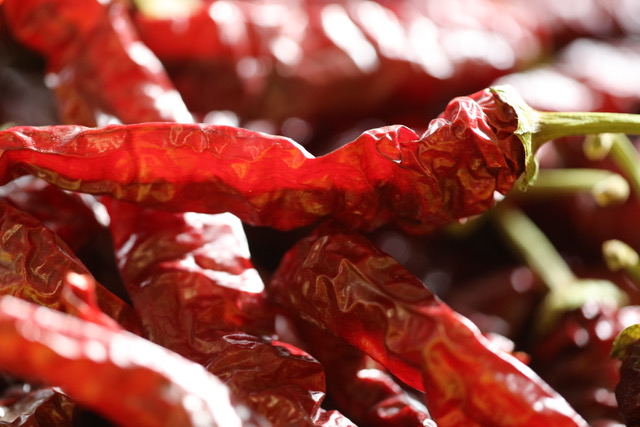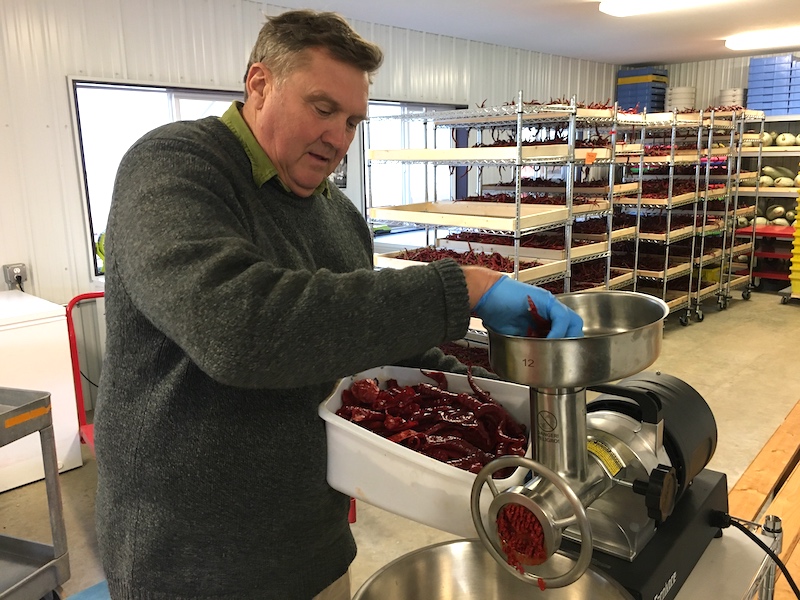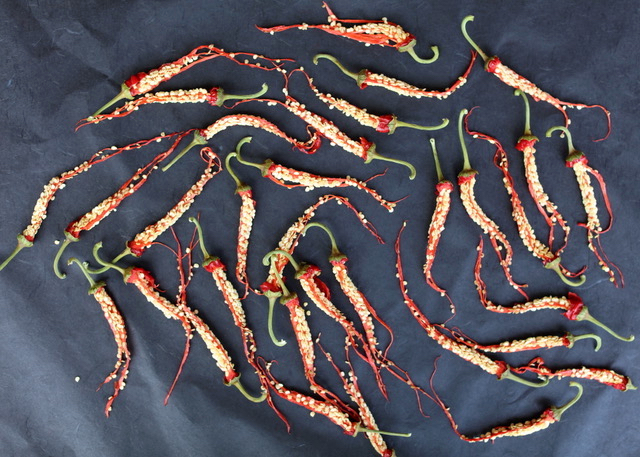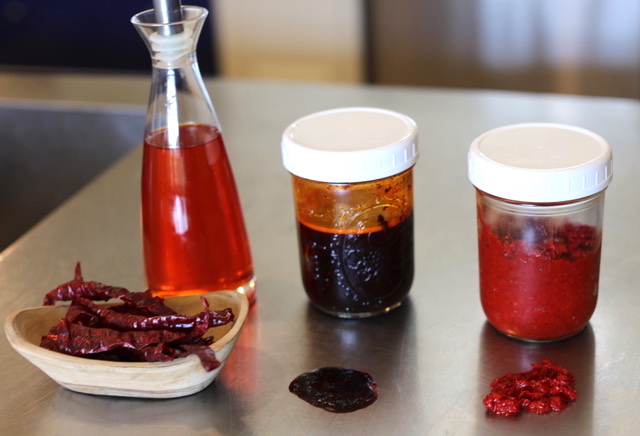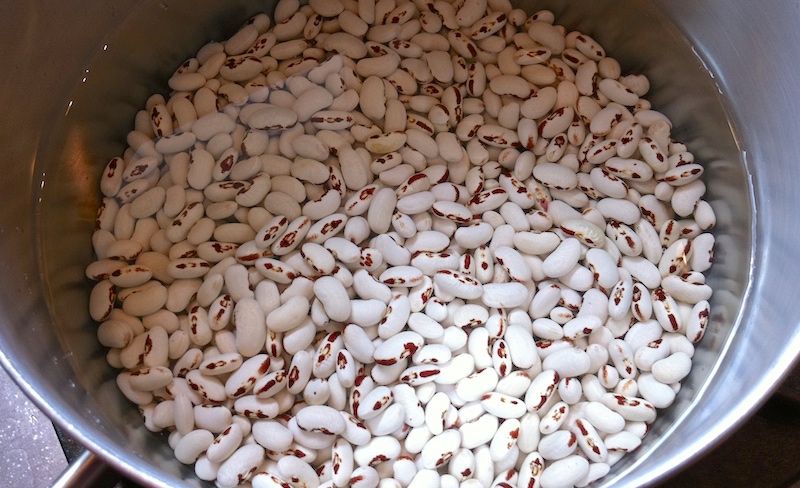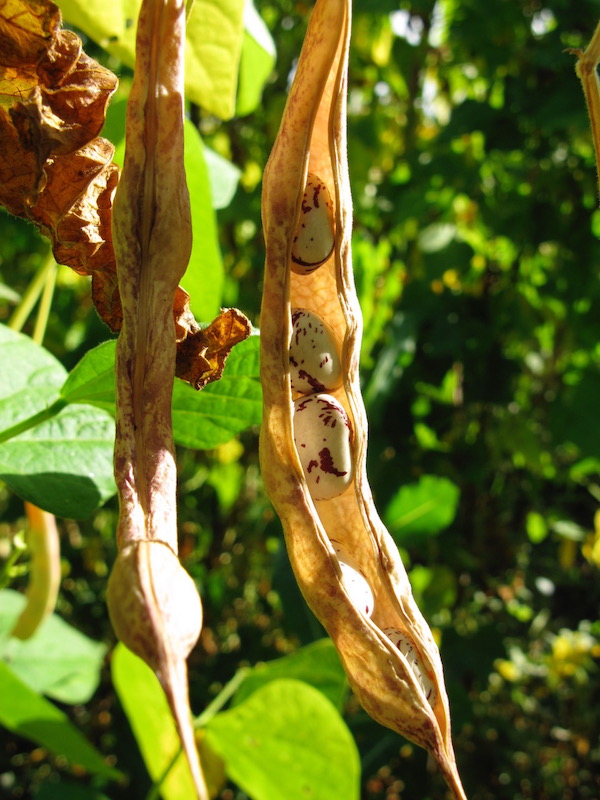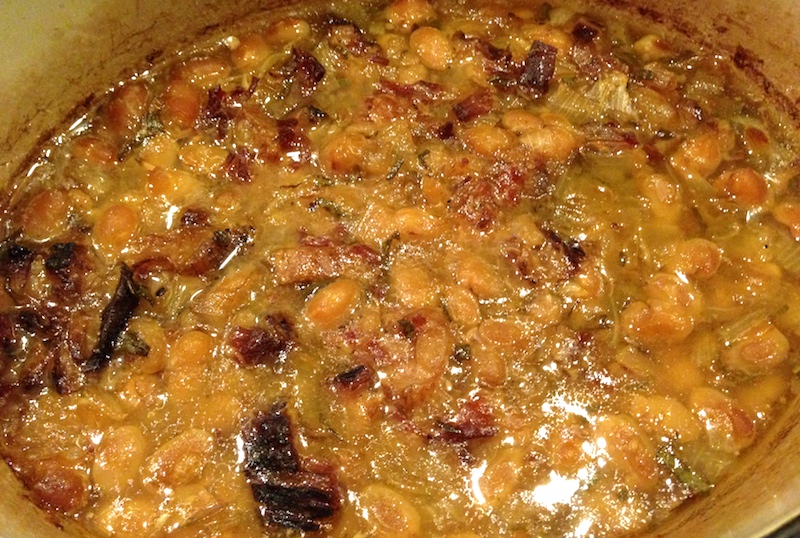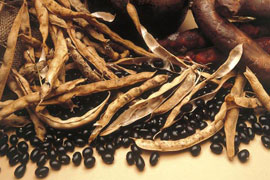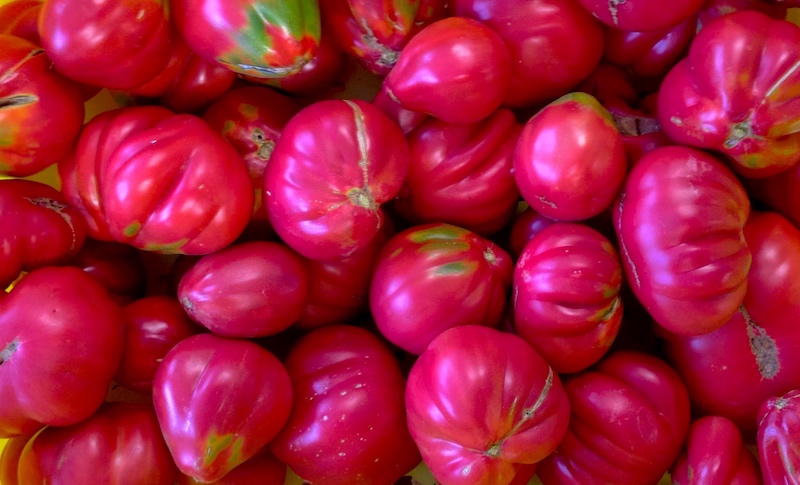
Astiana Tomatoes: Born in Italy's Piedmont, Bred in Oregon
Forgive me, dear readers, but I'm about to be in head-down tomato processing mode for the next couple of weeks. I've got two sheet pans of chopped tomatoes in the oven that need to come out in 30 minutes, so this is going to be quick. They're the tail end of 60-pounds of the red-ribbed beauties known as Astiana tomatoes from Ayers Creek Farm, the first round of the 150 or so pounds I plan to process this year and squirrel away in the freezer for the winter.
I know, crazy, right?
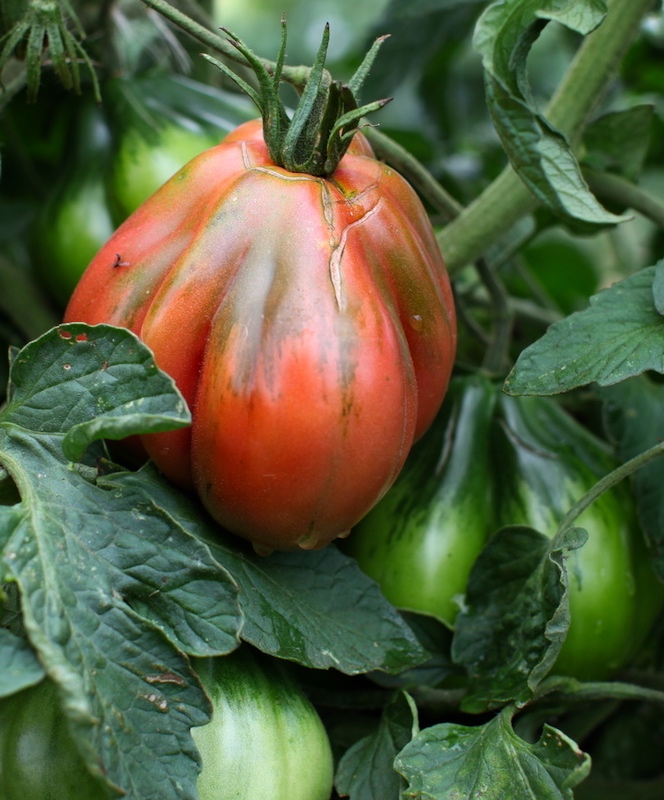
Those tomatoes, with just the right balance of tart-to-sweet, are the product of more than a decade of selecting seeds for flavor, plant health and field-hardiness on the part of Carol and Anthony Boutard of Ayers Creek Farm in Gaston, Oregon.
Carol describes the discovery of this signature fruit thusly:
"We came upon the fruit at the market in Asti [in the Piedmont region of northwestern Italy], marked 'Nostrano.' We knew it was the local variety, far less ornamental than the perfect, glossy imports displayed nearby. Had tomatoes not been on our shopping list for that night’s dinner, we might well have walked on by, but made the decision to select a few for the sauce. Their flavor was a wonderful surprise and it was after dinner that I scooped out all the seed I could find from the compost bucket."
(Anthony would remind me here that Italy's Piedmont is on roughly the same latitude as Oregon, meaning that the seeds could be adapted to our maritime climate.)
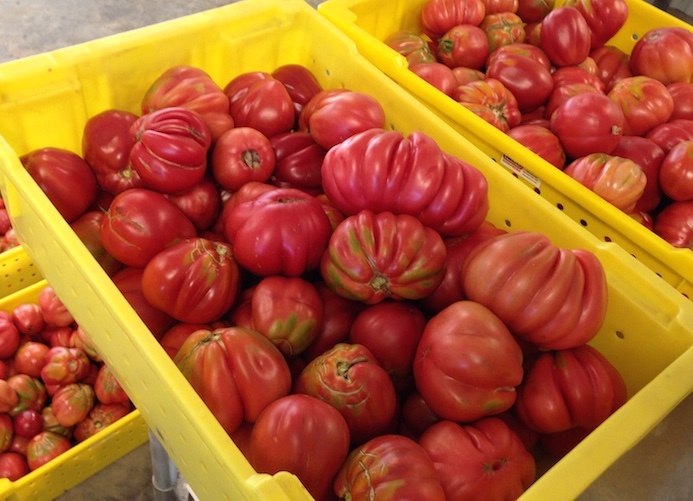
selecting seeds for next year.
From that less-than-a-handful of seeds they worked over the years to adapt them to their Wapato Valley soil and climate to grow the tomato of their dreams. It's important to point out that since tomatoes yield only one crop per year, selecting and planting for reliable results can take a decade or more to achieve the desired result. Then it requires painstakingly selecting seeds each harvest season in order to have enough of a selection for the next year's crop.
Plant breeding is truly the commitment of a lifetime, and the knowledge of Anthony and Carol's hard work makes my enjoyment of these amazing tomatoes all the sweeter.
Roasted tomatoes
My method of roasting is super simple, and to me respects the integrity of the fruit's best qualities, not to mention giving me the maximum flexibilty when it comes to using them.
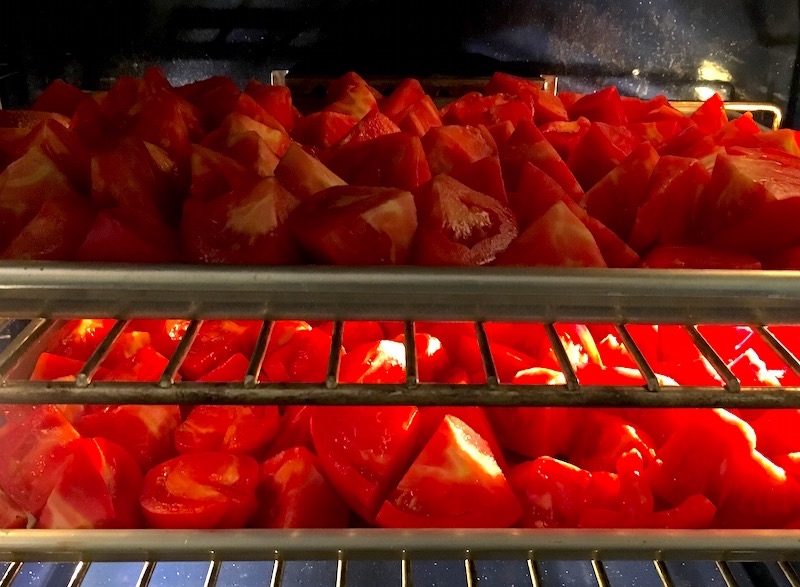 Preheat the oven to 400°, roughly chop the tomatoes into two-inch chunks, load onto two sheet trays skin-side down and roast for an hour. Cool enough to pull most of the skins off (most easily done by hand), load into quart freezer bags and you're done. If you want a sauce-like consistency, cool completely and run through a blender or food mill.
Preheat the oven to 400°, roughly chop the tomatoes into two-inch chunks, load onto two sheet trays skin-side down and roast for an hour. Cool enough to pull most of the skins off (most easily done by hand), load into quart freezer bags and you're done. If you want a sauce-like consistency, cool completely and run through a blender or food mill.
For a smoky flavor, you can build a fire in your wood-fired grill, spread the hot coals out and put a layer of tin foil over the grates, leaving the edges open so smoke can escape. Roughly chop the tomatoes as described above and place skin-side down on the foil. Place the lid on the grill and roast tomatoes until they are cooked, about 45 minutes to an hour.
Limited quantities of Ayers Creek Farm Astiana tomatoes are available during their brief season at Rubinette Produce and at Real Good Food.
 Here's a recipe for a fabulous tomato soup, one that I think rivals the best you're likely to find.
Here's a recipe for a fabulous tomato soup, one that I think rivals the best you're likely to find.
Creamy Roasted Tomato Soup
8 Tbsp. (1 stick) butter
1 large onion, chopped fine
3 cloves garlic, minced
1/4 c. flour
2 qts. (8 c.) roasted tomatoes or 3 28-oz. cans crushed tomatoes with their juices
2 c. chicken broth
1 Tbsp. kosher salt plus more to taste
1 tsp. celery salt
1/2 tsp. black pepper
In a Dutch oven or large soup pot, melt butter over medium heat. Add onion and sauté until tender and translucent. Add garlic and continue to sauté 2 minutes. Add flour and stir, making sure it doesn’t stick to the bottom of the pan, for 3 minutes. Add broth, tomatoes, salt, celery salt and pepper. Bring to a boil, then reduce heat to simmer for 30 minutes, stirring frequently to make sure nothing sticks to the bottom of the pan. Remove soup from heat and, using an immersion blender, purée the soup thoroughly until smooth*. Add more salt to taste, if needed. Serve.
* I don't mind a little texture from any bits that don't get totally blended in, but if you want a completely silky smooth finished product, you can press it through a fine mesh sieve, which will catch any remaining seeds or other bits.

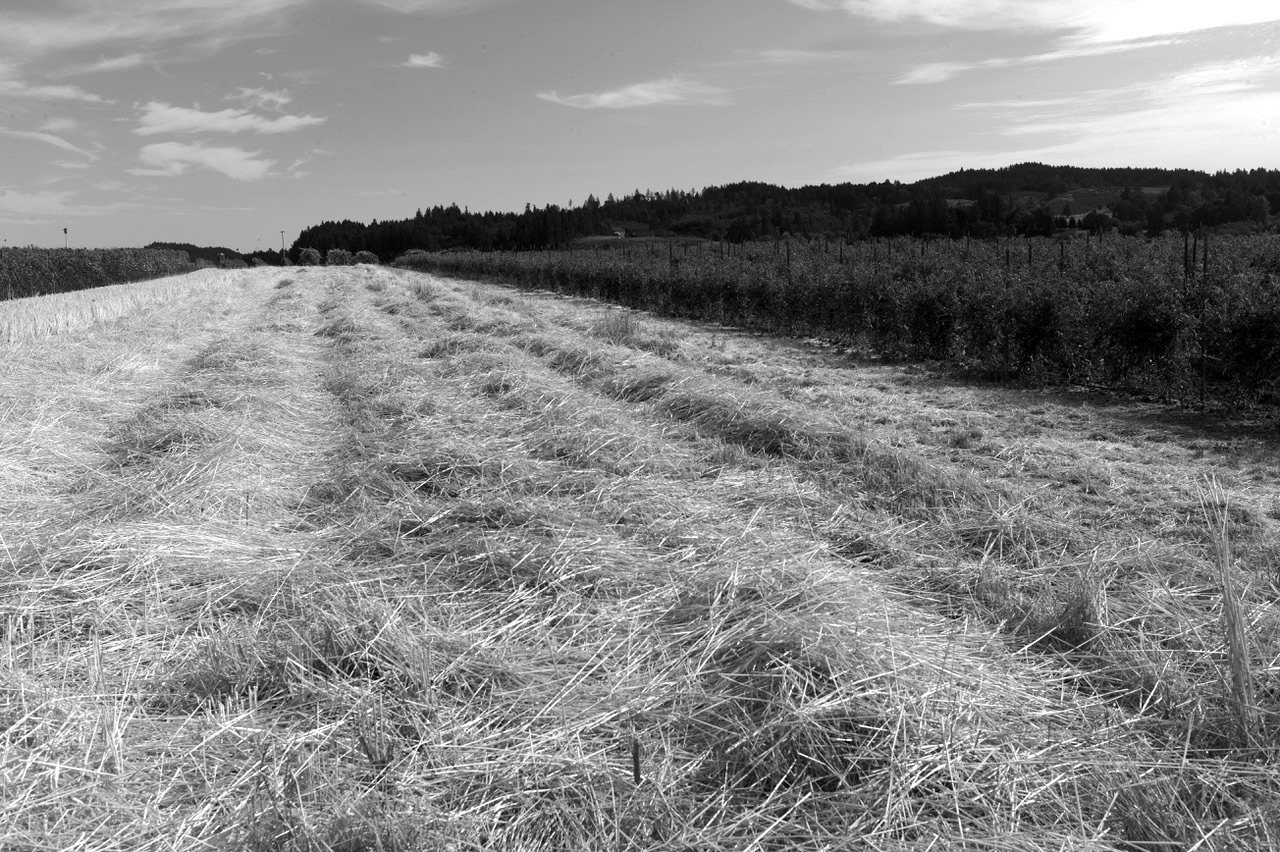




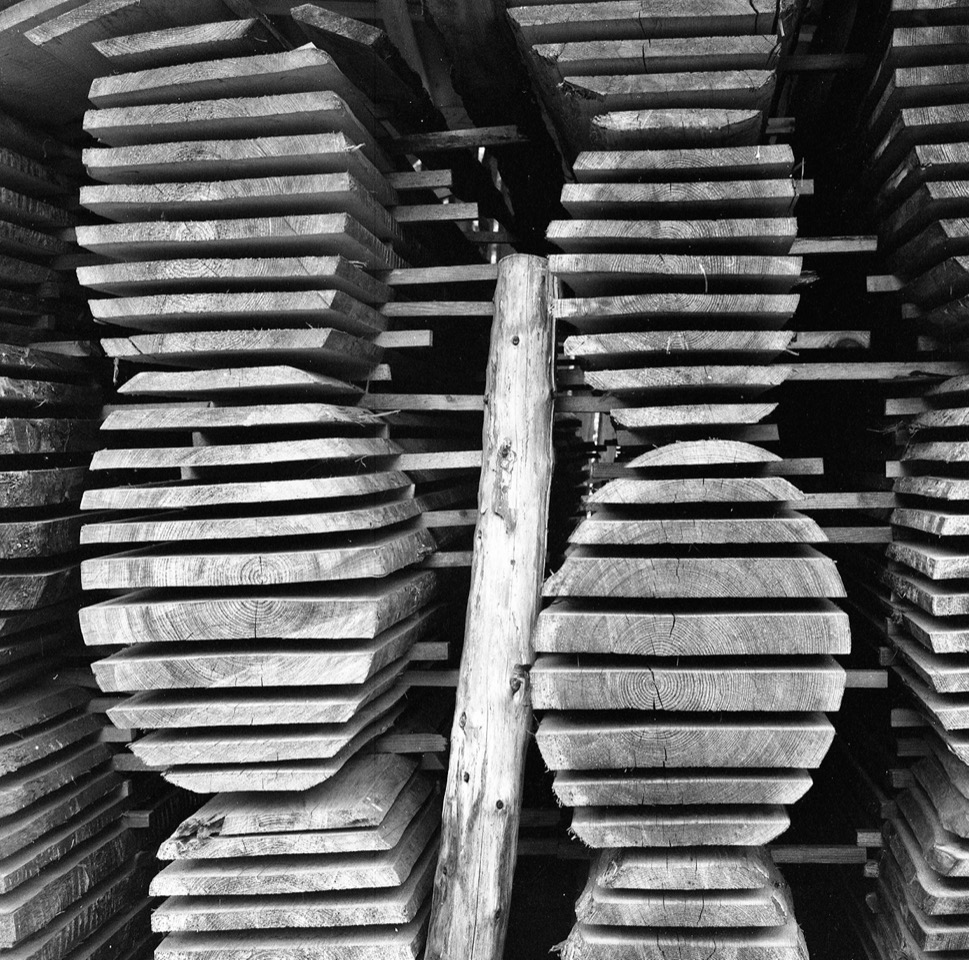
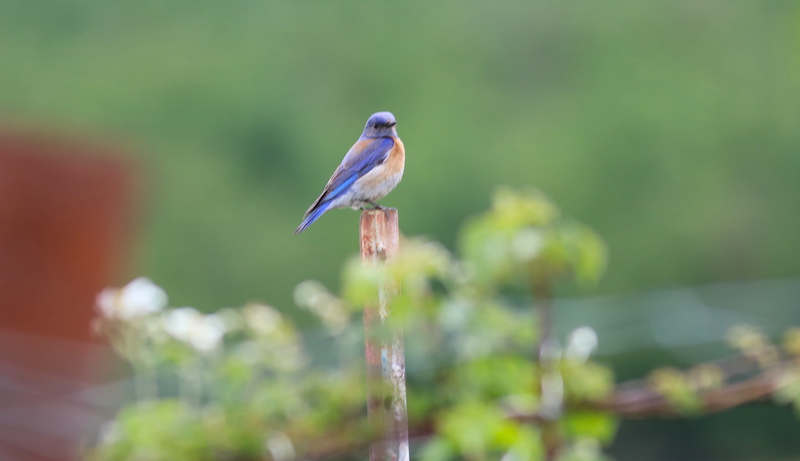
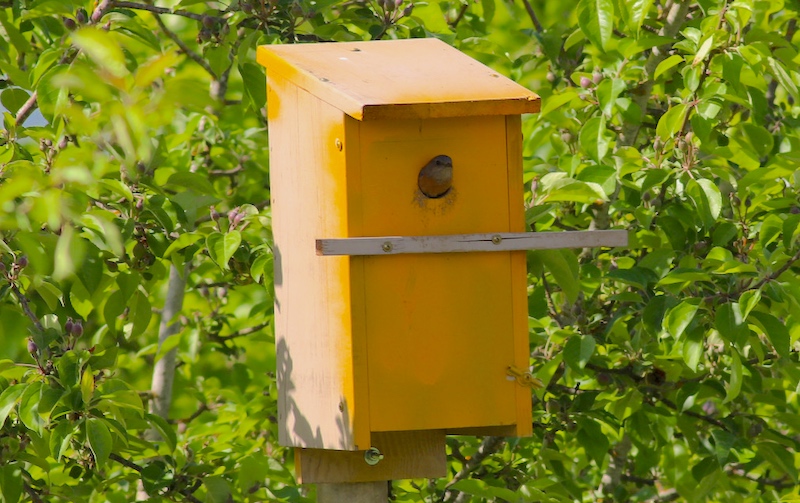

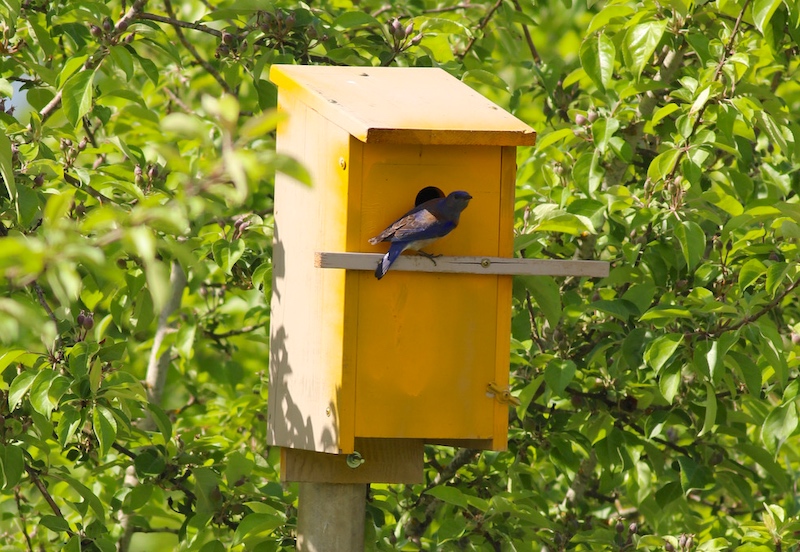
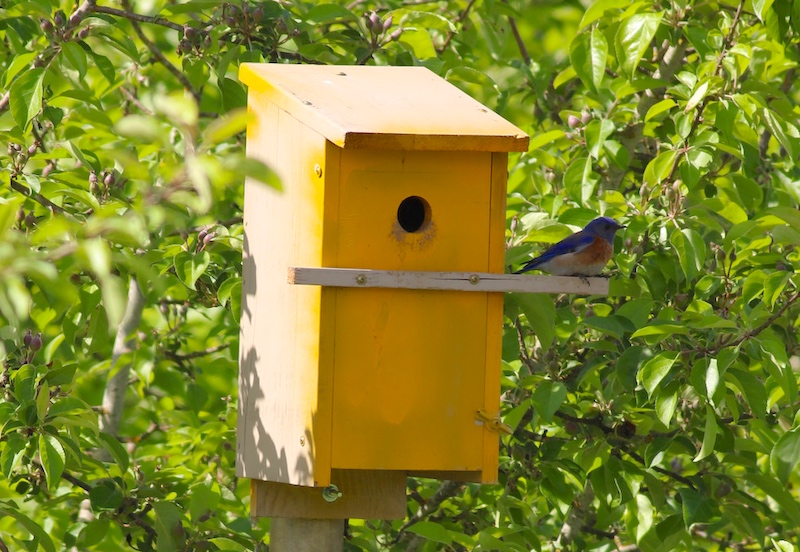
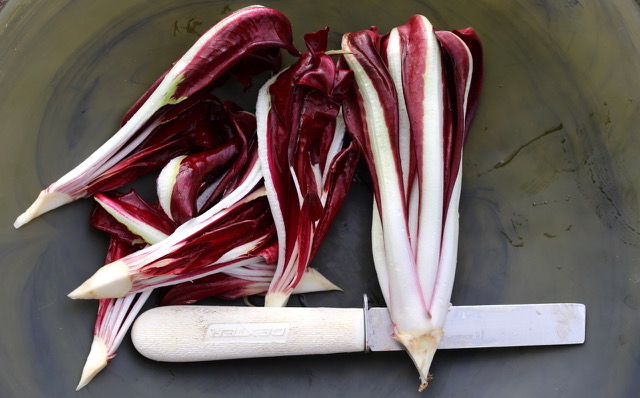
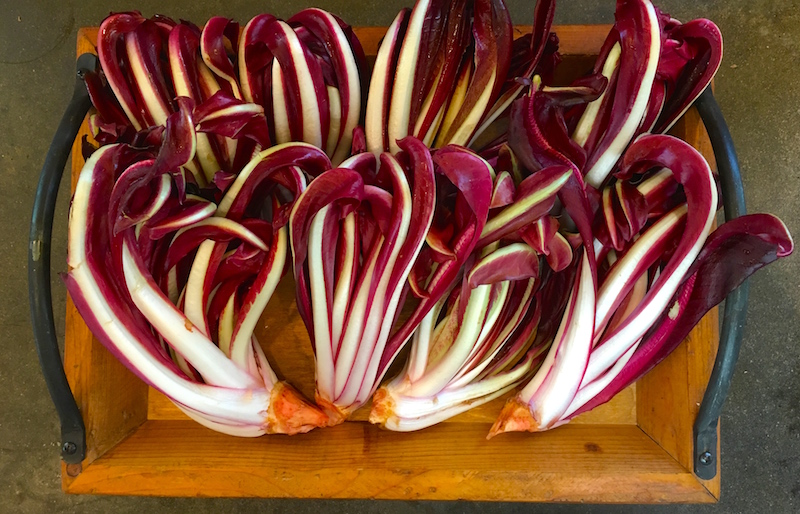
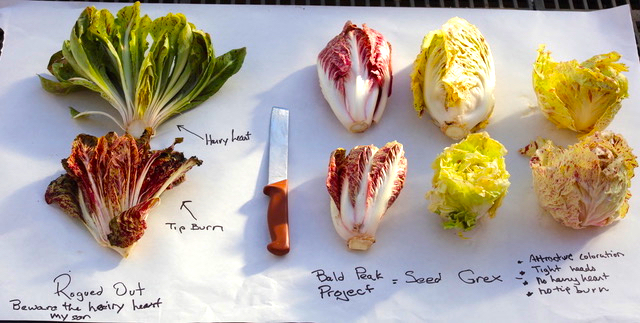 In 2017, we encountered a small cluster of chicories heading up January. It was clear that they were a genetic amalgam of the various sorts we had planted over the years, prompting us to start the "Bald Peak" project. We put them in pots so as to isolate them for pollination purposes, and harvested the seed that August. Last July we planted a row, and now we are selecting plants for our second seed harvest. We enjoyed walking the seed row with our friend Myrtha Zierock this week. Below are some examples of the heads we encountered. They were growing in the Arch Cape rows, and thus fair game for the harvest knife. The seed we harvest in August will ripen too late to resow. It will be planted in the July 2021 for harvest in January 2022. All this requires a schedule because we also breed to grow seed for the Arch Cape. In any given year, only one type of chicory can be grown for seed so as to avoid undesirable cross-pollination.
In 2017, we encountered a small cluster of chicories heading up January. It was clear that they were a genetic amalgam of the various sorts we had planted over the years, prompting us to start the "Bald Peak" project. We put them in pots so as to isolate them for pollination purposes, and harvested the seed that August. Last July we planted a row, and now we are selecting plants for our second seed harvest. We enjoyed walking the seed row with our friend Myrtha Zierock this week. Below are some examples of the heads we encountered. They were growing in the Arch Cape rows, and thus fair game for the harvest knife. The seed we harvest in August will ripen too late to resow. It will be planted in the July 2021 for harvest in January 2022. All this requires a schedule because we also breed to grow seed for the Arch Cape. In any given year, only one type of chicory can be grown for seed so as to avoid undesirable cross-pollination. 